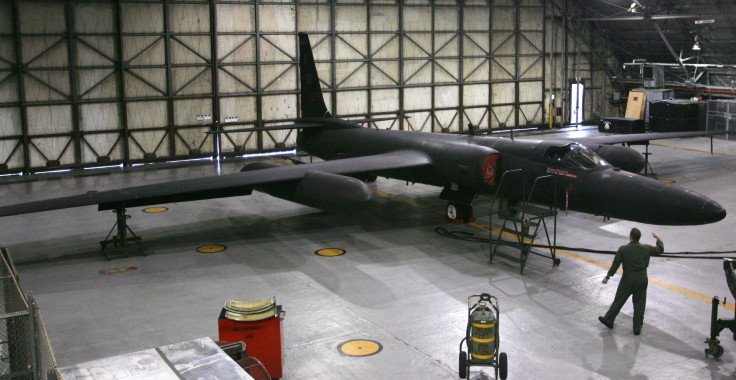China Calls Out US For Spy Plane Entering No-Fly Zone
KEY POINTS
- Beijing issues a "stern representation" to Washington over an alleged spy plane incident
- China: U.S. sent a U-2 spy plane into a no-fly zone where military training exercises were being conducted
- The U.S. maintained the plane did not violate the no-fly zone
- The U.S. vowed to continue monitoring operations in accordance with international law
A Chinese Defense Ministry spokesperson has voiced a protest over accusations of a U.S. spy plane entering a no-fly zone during a live-fire drill by the Chinese People's Liberation Army (PLA).
The Tuesday statement from spokesperson Wu Qian did not say exactly where the U-2 high altitude reconnaissance aircraft trespassed but claimed that it seriously interrupted the Chinese troops' normal exercises. The PLA recently has been conducting operations at various locations in the South China Sea.
The protest was called a "stern representation" and brought a warning from the Ministry that the spy plane’s move was a blatant act of provocation and may have caused a "misjudgment" or an accident.
According to a post on Language Log, the expression "stern (or solemn) representation" is a rather unusual way of expressing diplomatic discontent with a "peculiar style of English that has developed in China." The misjudgment is a reference to live fire from either side on the mistaken assumption that they are under fire from their adversary.
The incident comes at a time of heightened tensions in U.S.-China relations on several levels. China’s general denouncements of U.S. surveillance activities and calling them acts of provocation are not unusual, but making public statements about specific incidents is rare.
"This could easily have caused a misunderstanding or misjudgment or an unexpected incident. It was an act of naked provocation, and China is resolutely opposed to it, and have already lodged stern representations with the U.S. side. China demands the U.S. side immediately stop this kind of provocative behavior and take actual steps to safeguard peace and stability in the region," Wu told the state-run Global Times.
The U.S. military released a statement saying that the U-2 flight was "within the accepted international rules and regulations governing aircraft flights." It added that "Pacific Air Forces personnel will continue to fly and operate anywhere international law allows, at the time and tempo of our choosing."
The U-2 can perform reconnaissance activities from an altitude of 70,000 feet, which technically means it did not need to enter the no-fly zone. This is important because if the aircraft is in a no-fly zone, any response, including attempts to shoot it down, could be seen as justified.
Chinese military experts like Song Zhongping, a military commentator in Hong Kong, told the Global Times Tuesday that the PLA had shown "great restraint" in not firing on the U-2. He said that flying into a "previously announced no-fly zone" by the PLA was justification to shoot even if the Chinese air space was not violated.
Another unnamed Chinese expert told the Global Times that a foreign military aircraft trespassing into a live-fire drill would make it a live target and that the U.S. military would only have itself to blame if that plane was shot down as a training target for the PLA.
If a U-2 were to be shot out of the sky, it would mark the first time since April 2001 when an intercept of a U.S. spy plane by a Chinese fighter jet resulted in a collision that killed the Chinese pilot and forced the American plane to make an emergency landing on the southern Chinese island of Hainan.
Between 1962 and 1967, at least five U-2 planes that ventured into mainland Chinese air space were shot down, according to available public information.

© Copyright IBTimes 2024. All rights reserved.





















